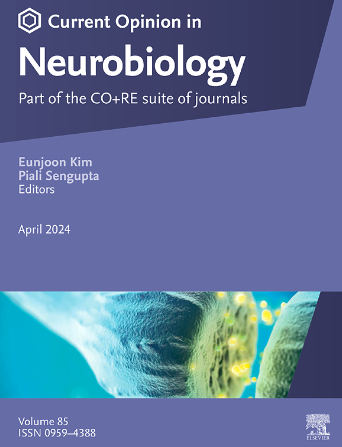Molecular and genetic mechanisms of plasticity in addiction
IF 5.2
2区 医学
Q1 NEUROSCIENCES
引用次数: 0
Abstract
Drugs of abuse result in well-characterized changes in synapse function and number in brain reward regions such as the nucleus accumbens. However, recent reports demonstrate that only a small fraction of neurons in the nucleus accumbens are activated in response to psychostimulants such as cocaine. While these “ensemble” neurons are marked by drug-related transcriptional changes in immediate early genes, the mechanisms that ultimately link these early changes to enduring molecular alterations in the same neurons are less clear. In this review, we 1) describe potential mechanisms underlying regulation of diverse plasticity-related gene programs across drug-activated ensembles, 2) discuss factors conferring ensemble recruitment bias within seemingly homogeneous populations, and 3) speculate on the role of chromatin and epigenetic modifiers in gating metaplastic state transitions that contribute to addiction.
成瘾可塑性的分子和遗传机制
药物滥用导致脑奖赏区如伏隔核突触功能和数量的明显变化。然而,最近的报告表明,伏隔核中只有一小部分神经元在可卡因等精神兴奋剂的作用下被激活。虽然这些“集合”神经元的特征是直接早期基因中与药物相关的转录变化,但最终将这些早期变化与同一神经元中持久的分子改变联系起来的机制尚不清楚。在这篇综述中,我们1)描述了在药物激活的集合中多种可塑性相关基因程序调控的潜在机制,2)讨论了在看似同质的群体中赋予集合招募偏见的因素,以及3)推测染色质和表观遗传修饰因子在控制导致成瘾的化生状态转变中的作用。
本文章由计算机程序翻译,如有差异,请以英文原文为准。
求助全文
约1分钟内获得全文
求助全文
来源期刊

Current Opinion in Neurobiology
医学-神经科学
CiteScore
11.10
自引率
1.80%
发文量
130
审稿时长
4-8 weeks
期刊介绍:
Current Opinion in Neurobiology publishes short annotated reviews by leading experts on recent developments in the field of neurobiology. These experts write short reviews describing recent discoveries in this field (in the past 2-5 years), as well as highlighting select individual papers of particular significance.
The journal is thus an important resource allowing researchers and educators to quickly gain an overview and rich understanding of complex and current issues in the field of Neurobiology. The journal takes a unique and valuable approach in focusing each special issue around a topic of scientific and/or societal interest, and then bringing together leading international experts studying that topic, embracing diverse methodologies and perspectives.
Journal Content: The journal consists of 6 issues per year, covering 8 recurring topics every other year in the following categories:
-Neurobiology of Disease-
Neurobiology of Behavior-
Cellular Neuroscience-
Systems Neuroscience-
Developmental Neuroscience-
Neurobiology of Learning and Plasticity-
Molecular Neuroscience-
Computational Neuroscience
 求助内容:
求助内容: 应助结果提醒方式:
应助结果提醒方式:


